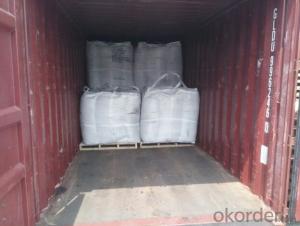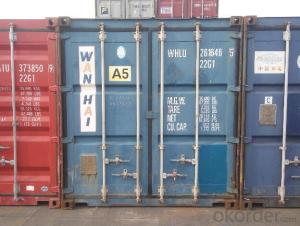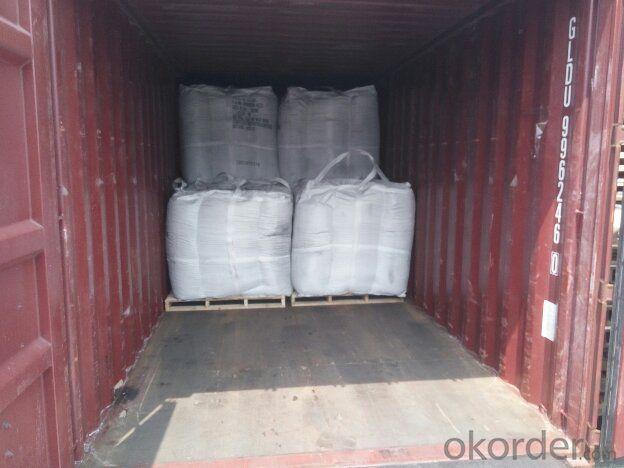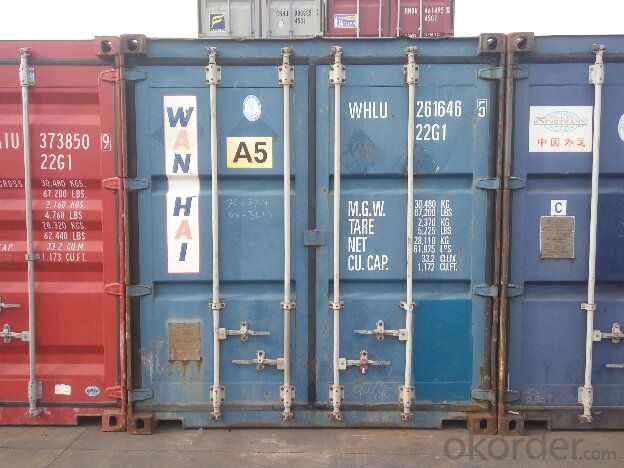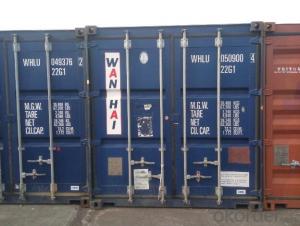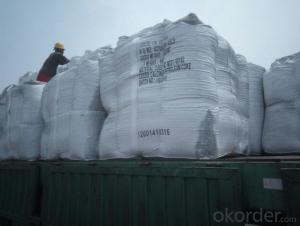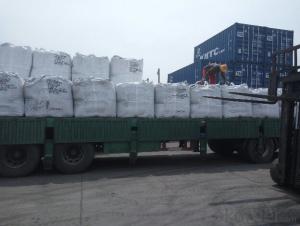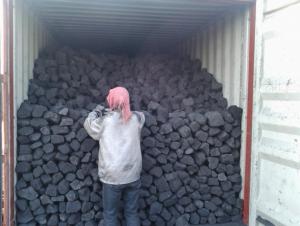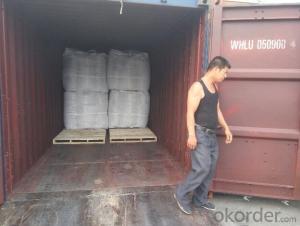10% Ash Foundry Coke used in Foundry Plant in Shandong
- Loading Port:
- Tianjin
- Payment Terms:
- TT OR LC
- Min Order Qty:
- 20.2
- Supply Capability:
- 1002 m.t./month
OKorder Service Pledge
OKorder Financial Service
You Might Also Like
Brief Introduction
Foundry Coke is the main fuel of melting iron in the oven. It can melt the materials in the over, make the iron reach great heat, and keep good air permeability by sustain stock column. Thus, the foundry coke should have the characteristics of big block, low reactivity, small porocity, enough anti-crush strengh, low ash and low sulphur.
The coke handled by our cooperation is made from superior coking coal of Shanxi province. Provided with the advantages of low ash, low sulphur and high carbon. Our coke is well sold in European, American, Japanese and South-east Asian markets. Our owned Coke plant are located in Shanxi Province and supplying of you many kinds of coke. it is more and more popular in the world
we supply Foundry Coke long-term, its characteristic is best strength, low sulfur and phosphorus,thermal stability.
Specifications:
ASH % | 8% max | 10% max | 12% max |
V.M.% MAX | 1.5% max | 1.5% max | 2% max |
SULFUR % | 0.65% max | 0.65% max | 0.7% max |
MOISTURE | 5% max | 5% max | 5% max |
Size | 80mm-120mm,80-150,100-150mm, or as request | ||
Features
1. Our quality is always quite good and stable which is producing and packing according to customers' requirements.
2. Putting Client profile into first, achieved mutual benefit.
3. Good partner on business. It's a good and wise choice for customers' to purchase from us. It's our great honor to cooperate with you.
4. We can supply documents as follows:
- bill of loading,
-Invoice,
-Packing List
-Insurance
-standard inspection pictures of the container as specified by INSPECTORATE
-or more requested by buyer.
Pictures
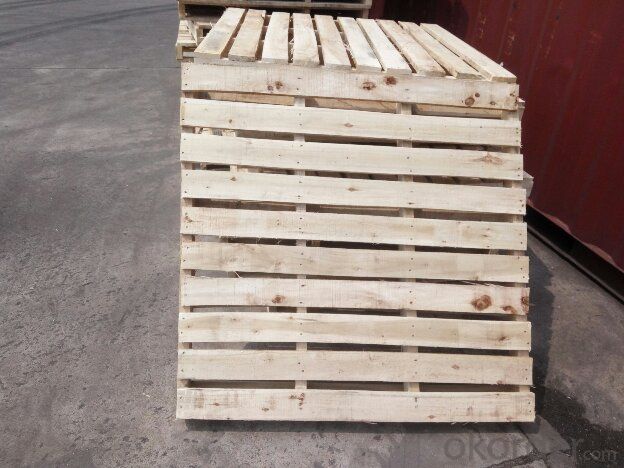

FAQ
1. What is the packing?
In 25kg bag/ In jumbo bags without pallet/ Two jumbo bags with one pallet/ or as customers’ request
2. What is the production capacity?
10 thousand tons per month
3 What is payment term?
Irrevocable LC at sight/ 20% down payment by T/T and 80% against BL copy byT/T/ or to be discussed
4 What is the service?
We will send sample to the third party(CIQ, CCIC, SGS,BV or to be discussed) for checking, and present the test certificate and loading repot of shipment.
- Q: What should we do to reduce carbon emissions in our lives?
- Reducing the burning of fossil fuels is important, reducing the emission of motor vehicles, reducing private cars, reducing thermal power, and burning carbon emissions from coal-fired power plants
- Q: How is carbon formed?
- Carbon is formed through various natural processes, primarily through the decay and decomposition of organic matter such as plants and animals. Additionally, carbon can be formed through volcanic activity and the burning of fossil fuels.
- Q: What is carbon fixation in biology?
- Carbon fixation is the process by which carbon dioxide from the atmosphere is converted into organic compounds by plants, algae, and some bacteria. This process is crucial for the production of organic matter and the maintenance of a stable carbon cycle on Earth.
- Q: Why use carbon batteries for alarm clocks?
- Look at your clock is what kind of, some nickel battery (batteries) can also be a bit expensive. Lithium battery. And what in fact almost never mind, as long as you start voltage alarm on the line. You said carbon battery is called alkaline battery his standard voltage is 1.5V the charging the battery is generally 1.2V. to this problem is not a reward.
- Q: What is latent carbon?
- With prochiral carbon atoms called prochiral molecules.For potential chiral compounds, can also be used to determine the order of rule configuration. For example, an atom of hydrogen by deuterium methylene propionate (D) replaced, if converted into R configuration, the hydrogen atom is called latent -R (pro-R) hydrogen atoms into S; if the configuration is called latent -S (pro-S the hydrogen atom).For medical workers, prochiral is an important concept. Almost all of the biological chemical reaction is controlled by the enzyme, the enzyme for prochiral molecules not symmetrically reaction, so they are able to identify two identical atoms or atomic groups, because they are chiral compounds. For example two methylene citric acid and only one methylene by enzymes (from rat liver) into carbonyl group.
- Q: Buy carbon carving, how to identify him is true or false, and the quality of good or bad?
- Most consumers think the difference between "Zijin carbon carving" and activated carbon is a cheap, a noble, a beautiful, a dirty, in fact they have a completely different function, "Zijin carbon carving at least three point is beyond the powder activated carbon.One is "up to 100 times longer and even thousands of times the Zijin carbon carving" activated carbon powder than life, there is a gap between the granular activated carbon powder, the gap will be preferential adsorption of water vapor, in one to two months (the South may be less than half a month) to form a hydrophilic outer shell thus, lost its adsorption function, and the "Zijin carbon carving" the large volume high fine carbon, molecular absorption pressure technology of gapless combined, and through the fine carbon activation activation of the "Zijin carbon carving" internal logic array pore formation, through carbonization and activation, pore forming process makes "Zijin carbon carving" to achieve through the hole directional adsorption of formaldehyde, benzene and other toxic and harmful gases but also through the large hole directional water vapor, but also through the hole directional adsorption of radiation, thereby greatly prolonging the service life.Second is the powder activated carbon particles easily suspended in the indoor air, forming second pollution, and "Purple carbon carving" seamless seamless activated carbon sublimation products, no pollution second times.Third, "Purple carbon carving" has an elegant artistic form. It is an ideal decoration for home and office, and the purification effect is more thorough
- Q: Material characteristics of carbon fiber
- This allows carbon fibers to have the highest specific strength and specific modulus in all high-performance fibers. Compared with the metal materials such as titanium, steel and aluminium, carbon fiber has the characteristics of high strength, high modulus, low density and low coefficient of linear expansion. It can be called the "king of new materials". In addition to carbon fiber with general characteristics of carbon material, its appearance has obvious anisotropy and soft, can be processed into a variety of fabrics, and the proportion of small, along the fiber axis show a very high strength carbon fiber reinforced epoxy resin composites, the strength and modulus of composite indicator in the existing structural materials is the highest. The tensile strength of carbon fiber resin composite materials are generally in more than 3500 MPa, is 7 to 9 times that of steel, the tensile modulus of 230 to 430G were also higher than that of steel; therefore the specific strength of CFRP material intensity and density can be achieved above 2000 MPa, the specific strength of A3 steel is only 59 MPa.
- Q: What are the impacts of carbon emissions on the stability of grasslands?
- Carbon emissions can have significant impacts on the stability of grasslands. Increased levels of carbon in the atmosphere contribute to global warming, which in turn leads to changes in precipitation patterns and higher temperatures. These changes can result in drought conditions and increased frequency and intensity of wildfires, both of which can destabilize grasslands. Additionally, elevated carbon dioxide levels can promote the growth of invasive plant species, which can outcompete native grasses and disrupt the balance of grassland ecosystems. Overall, carbon emissions pose a threat to the stability and biodiversity of grasslands.
- Q: What are the uses of carbon black?
- Due to its unique properties, carbon black finds wide-ranging applications in various industries. One of its primary uses is as a reinforcing filler in rubber materials, enhancing their strength, durability, and resistance to wear and tear. This makes them suitable for various applications, including tires, conveyor belts, gaskets, hoses, and shoe soles. Moreover, carbon black serves as a pigment in inks, coatings, and dyes. Its high tinting strength and ability to absorb ultraviolet light make it an excellent choice for coloring plastics, paints, and printing inks. Additionally, it is employed in toners for photocopiers and laser printers, ensuring high-quality printing with its dark color. Furthermore, carbon black is valuable in the manufacturing of electrodes for batteries and fuel cells. Its electrical conductivity and large surface area enhance the performance and efficiency of energy storage devices. Additionally, it is used in the production of carbon brushes, crucial components in electric motors and generators. In the construction industry, carbon black acts as a filler in concrete and asphalt, improving their strength, durability, and resistance to weathering. It reduces cracking and extends the lifespan of these materials. Additionally, it is utilized in the production of conductive polymers, which aid in static dissipation and electromagnetic shielding in various construction materials. In conclusion, carbon black has diverse applications across multiple industries. Whether it is reinforcing rubber, coloring inks and coatings, enhancing energy storage devices, or strengthening construction materials, carbon black plays a vital role in improving the performance and durability of various products.
- Q: What is the carbon cycle?
- The carbon cycle is a natural process that involves the movement of carbon dioxide (CO2) between the atmosphere, land, bodies of water, and living organisms. It is a vital component of Earth's ecosystem and plays a crucial role in regulating the planet's climate. The carbon cycle begins with the absorption of CO2 by plants during photosynthesis. Plants take in CO2 from the atmosphere and convert it into organic compounds, such as glucose, which they use for growth and energy. This process is known as carbon fixation. Consumers, such as animals, obtain carbon by consuming plants or other animals that have already incorporated carbon into their tissues. When plants and animals respire, they release CO2 back into the atmosphere, completing the first part of the cycle. Another pathway in the carbon cycle is the decomposition of organic matter by decomposers, such as bacteria and fungi. During decomposition, carbon is released as CO2 or enters the soil as organic carbon. This stored carbon can be later released back into the atmosphere through microbial respiration or erosion. The carbon cycle also involves the exchange of carbon between the atmosphere and bodies of water. When CO2 dissolves in water, it forms carbonic acid, leading to ocean acidification. Marine plants, such as algae and phytoplankton, play a crucial role in the cycle by photosynthesizing and absorbing CO2 from the water. Additionally, geological processes such as volcanic activity and weathering also release carbon into the atmosphere. Over long periods of time, carbon can be stored in the Earth's crust as fossil fuels, such as coal, oil, and natural gas. When these fossil fuels are burned for energy, they release large amounts of CO2, contributing to the greenhouse effect and climate change. The carbon cycle is a continuous and intricate process that maintains a delicate balance of carbon in the Earth's atmosphere and ecosystems. However, human activities, particularly the burning of fossil fuels and deforestation, have significantly altered this balance by releasing excessive amounts of CO2 into the atmosphere. This disruption of the carbon cycle has led to global warming and other environmental issues, highlighting the importance of understanding and mitigating human impacts on this vital natural process.
Send your message to us
10% Ash Foundry Coke used in Foundry Plant in Shandong
- Loading Port:
- Tianjin
- Payment Terms:
- TT OR LC
- Min Order Qty:
- 20.2
- Supply Capability:
- 1002 m.t./month
OKorder Service Pledge
OKorder Financial Service
Similar products
Hot products
Hot Searches
Related keywords
